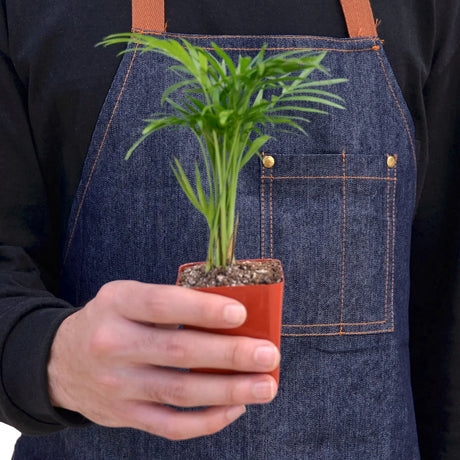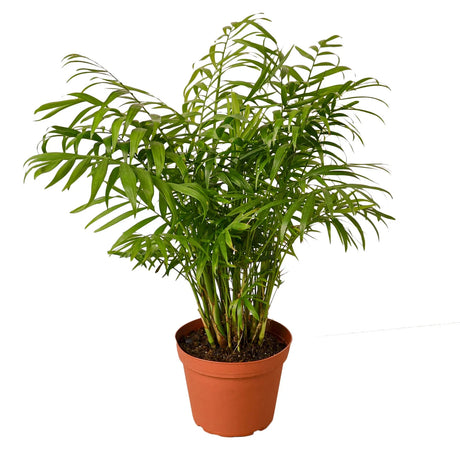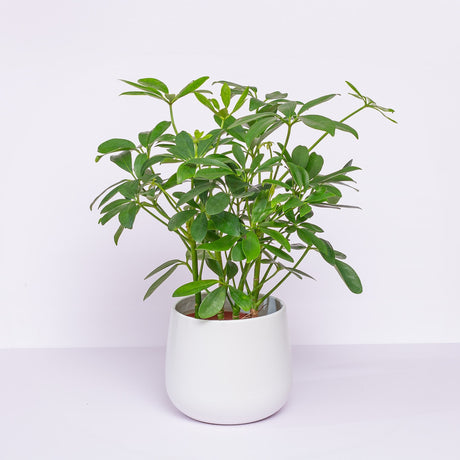- $2195
$3395Unit price /Unavailable - $1495
$2395Unit price /Unavailable - $5295
$11995Unit price /Unavailable - $2495
$3595Unit price /Unavailable - $1595
$2495Unit price /Unavailable - $2395
$3795Unit price /Unavailable - $1895
$2895Unit price /Unavailable - $5295
$8495Unit price /Unavailable - $2195
$3395Unit price /Unavailable
Houseplants & Potted Favorites: Elevate Your Indoor Space with Lush Greenery
Transform your home into a vibrant sanctuary with our Houseplants and Potted Favorites collection. Whether you're looking for low-maintenance greenery, fragrant blooms, or even edible indoor plants, we have the perfect selection to complement your space. From bold, statement plants to compact, easy-care varieties, our houseplants bring beauty, function, and freshness to any room.
Why Choose Houseplants?
Enhance Air Quality & Ambiance
Houseplants do more than just add a touch of green—they actively improve indoor air quality by filtering toxins and increasing oxygen levels. Adding houseplants to your space can create a calming atmosphere, reduce stress, and elevate the aesthetics of any room.
Ornamental & Functional Choices
Looking for more than just decor? Many of our houseplants serve a dual purpose. Citrus trees like the Improved Meyer Lemon Bush and Key Lime Tree bring fresh fruit indoors, while striking foliage plants like the Fiddle-Leaf Fig and Snake Plant add a stylish, natural touch to your space.
Easy-Care Options for Every Lifestyle
Whether you’re a seasoned plant enthusiast or just starting your indoor garden, we offer a variety of houseplants suited to different care levels. Hardy options like the ZZ Plant and Laurentii Snake Plant require minimal upkeep, making them ideal for busy lifestyles.
Popular Houseplants & Potted Favorites
Arbequina Olive Tree
Botanical Name: Olea europaea 'Arbequina'
Mature Height: 4-6 ft.
Why Choose It: Bring a Mediterranean feel to your home with the silvery-green foliage of the Arbequina Olive Tree. Thriving in bright light, this tree offers ornamental beauty with the potential to produce small, flavorful olives.
Improved Meyer Lemon Bush
Botanical Name: Citrus × meyeri
Mature Height: 3-5 ft.
Why Choose It: A compact citrus plant that flourishes indoors, producing fragrant blossoms and sweet, tangy lemons—perfect for adding a refreshing scent and vibrant greenery to your home.
Cold Hardy Avocado Tree
Botanical Name: Persea americana
Mature Height: 5-7 ft.
Why Choose It: Enjoy homegrown avocados with this lush, tropical tree that thrives indoors, offering both aesthetic appeal and edible rewards.
Fiddle-Leaf Fig Tree
Botanical Name: Ficus lyrata
Mature Height: 6-10 ft.
Why Choose It: A bold houseplant with large, violin-shaped leaves that make a dramatic statement in bright indoor spaces.
Laurentii Snake Plant
Botanical Name: Sansevieria trifasciata 'Laurentii'
Mature Height: 2-3 ft.
Why Choose It: This low-maintenance plant thrives in low-light conditions and has air-purifying properties, making it an excellent choice for homes and offices alike.
More Houseplant Favorites
Arabica Coffee Plant
Botanical Name: Coffea arabica
Mature Height: 3-6 ft.
Why Choose It: Enjoy glossy green leaves and fragrant white flowers while growing your own coffee beans at home.
Key Lime Tree
Botanical Name: Citrus aurantiifolia
Mature Height: 6-10 ft.
Why Choose It: Producing small, aromatic limes perfect for culinary uses, this tree adds a refreshing citrus scent and a pop of greenery to your kitchen or patio.
Fignominal Fig
Botanical Name: Ficus carica
Mature Height: 4-6 ft.
Why Choose It: A compact fig tree ideal for small spaces, offering sweet, delicious fruit alongside attractive foliage.
Choosing the Right Houseplant
Light Requirements
Different plants thrive in different lighting conditions. If your space gets bright, indirect light, options like the Fiddle-Leaf Fig and Arbequina Olive Tree are great choices. For low-light areas, opt for hardy plants like the Laurentii Snake Plant or ZZ Plant.
Size & Growth Habit
Consider your available space when selecting a houseplant. Larger varieties like the Fiddle-Leaf Fig or Arbequina Olive Tree make stunning focal points, while compact options like the Fignominal Fig and Meyer Lemon Bush fit beautifully into smaller spaces.
Care & Maintenance
Whether you prefer low-maintenance plants or enjoy tending to more involved varieties, our selection caters to all experience levels. If you want an easy-care option, try the ZZ Plant or Snake Plant. For more hands-on care, citrus trees and coffee plants reward you with edible produce.
Frequently Asked Questions
1. How often should I water my houseplants?
Watering frequency varies, but a general rule is to let the top inch of soil dry out before watering again. Low-water plants like the Snake Plant need less frequent watering, while citrus trees require more consistent moisture.
2. Can houseplants improve air quality?
Yes! Many plants, including the Snake Plant and ZZ Plant, help filter toxins from the air while releasing oxygen, contributing to a healthier indoor environment.
3. Can I grow fruit indoors with houseplants?
Absolutely! Citrus trees like the Meyer Lemon Tree and Key Lime Bush, as well as the Cold Hardy Avocado Tree, are excellent choices for producing fruit indoors with the right care.
4. Do houseplants need fertilizer?
Most houseplants benefit from occasional fertilization, particularly during the growing season. A balanced, water-soluble fertilizer every 4-6 weeks supports healthy growth.
5. Can houseplants thrive in low light?
Yes, many houseplants are well-suited to low-light conditions. The Laurentii Snake Plant and ZZ Plant are both excellent choices for rooms with limited natural light.
6. When should I repot my houseplant?
Signs that your plant needs repotting include roots growing out of drainage holes, soil drying out too quickly, or slowed growth. Repot every 1-2 years to refresh soil and allow for root expansion.
Whether you’re looking for a statement plant or an easy-care green companion, our Houseplants & Potted Favoritescollection has something for everyone. Explore our selection and bring nature indoors today!











































































